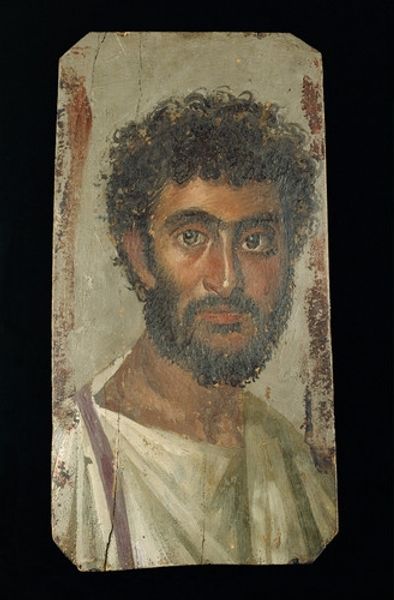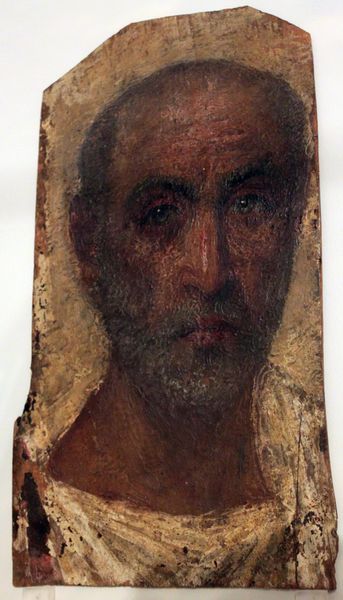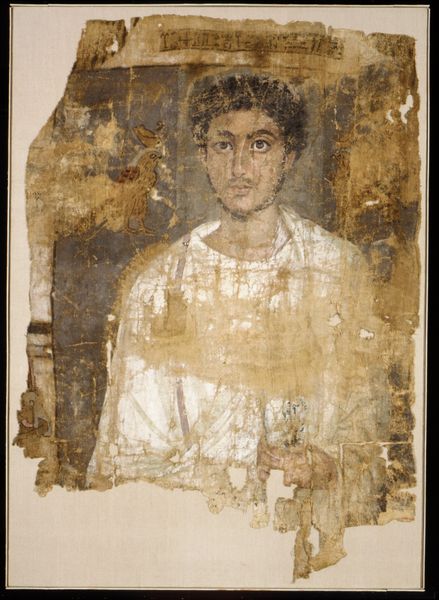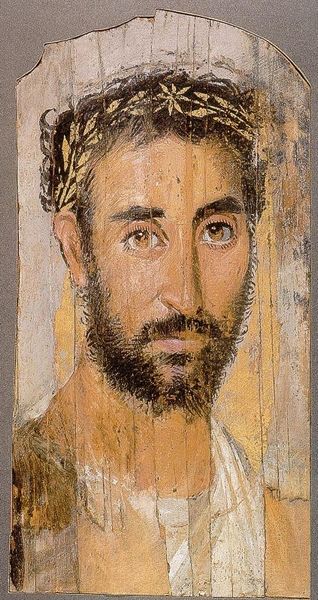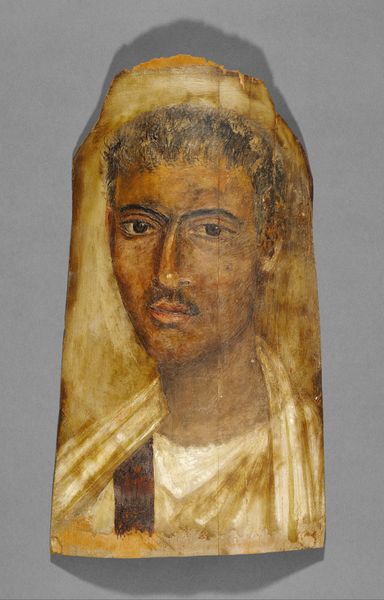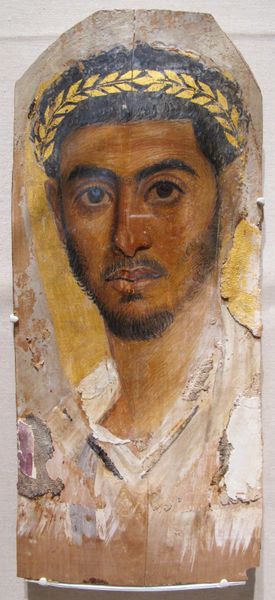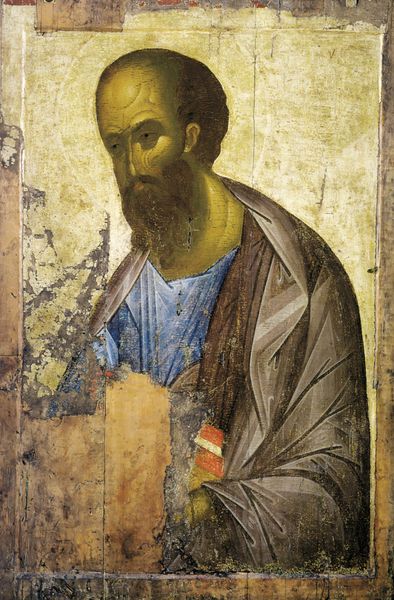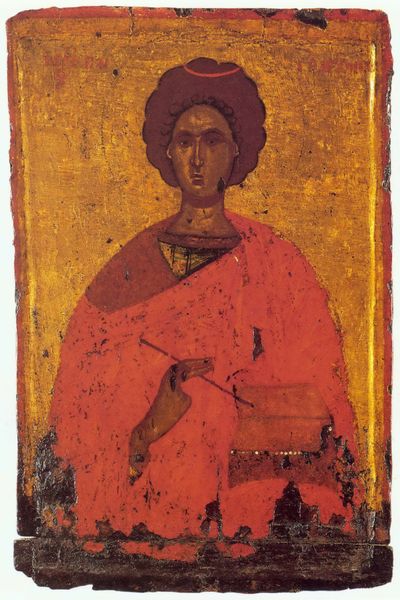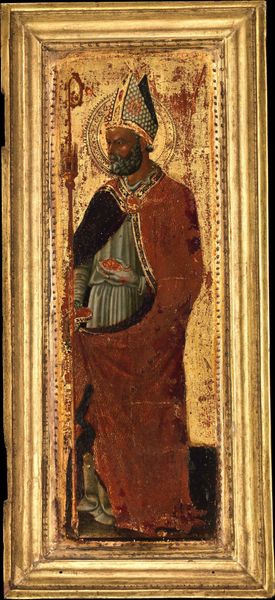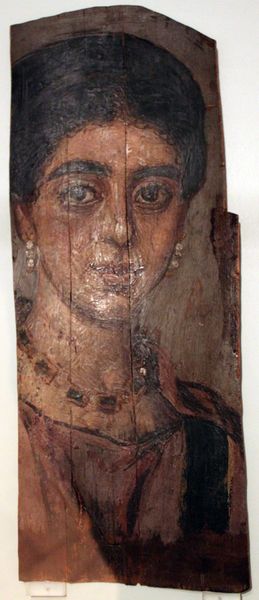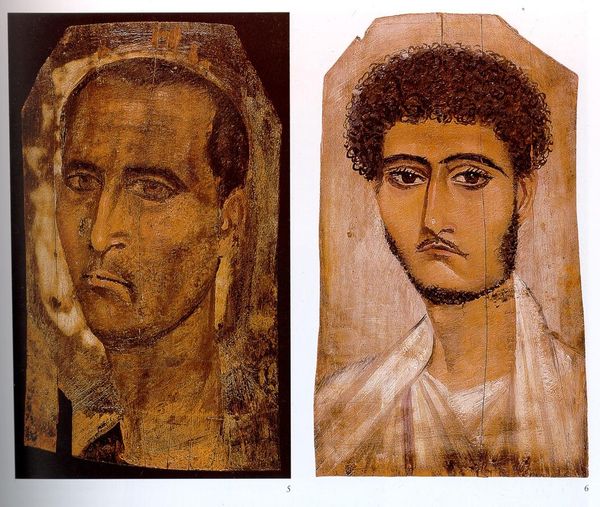
tempera, painting
#
portrait
#
face
#
tempera
#
painting
#
ancient-egyptian-art
#
figuration
#
oil painting
#
ancient-mediterranean
Copyright: Public domain
Editor: We're looking at "Portrait of a Thin-faced Man," a tempera painting dating back to 170 AD. It’s part of the Fayum portrait collection at the Pushkin Museum. The man’s gaze is really intense; it almost feels like he’s looking directly at you. What stands out to you? Curator: The rendering of form through color modulation, of course. Notice how the artist has created volume in the face through subtle shifts in tone. Observe the relationship between the dark browns used to define the beard and the lighter ochres highlighting the cheekbones. The effect creates a strong sense of three-dimensionality on a flat surface. Also, consider the gilded laurel wreath and background; its shimmering surface texture contrasts with the relatively matte finish of the face. Editor: So, you’re focusing on how the artist uses the medium itself, tempera, to create these effects? Curator: Precisely. It's the interplay between materials and artistic technique that is key. The composition is fundamentally about formal relationships – between light and shadow, texture and surface. One might consider how these visual strategies work in relation to the semiotic tradition of funerary portraiture. Editor: That makes sense. I was so caught up in the realistic details of the face that I missed some of those nuances. Curator: Indeed. Analyzing the arrangement of formal elements enhances one's appreciation and understanding. Editor: I definitely learned to look more closely at the artist's specific choices regarding color and technique. Curator: And understanding those formal choices opens new paths of interpretive inquiry.
Comments
No comments
Be the first to comment and join the conversation on the ultimate creative platform.
